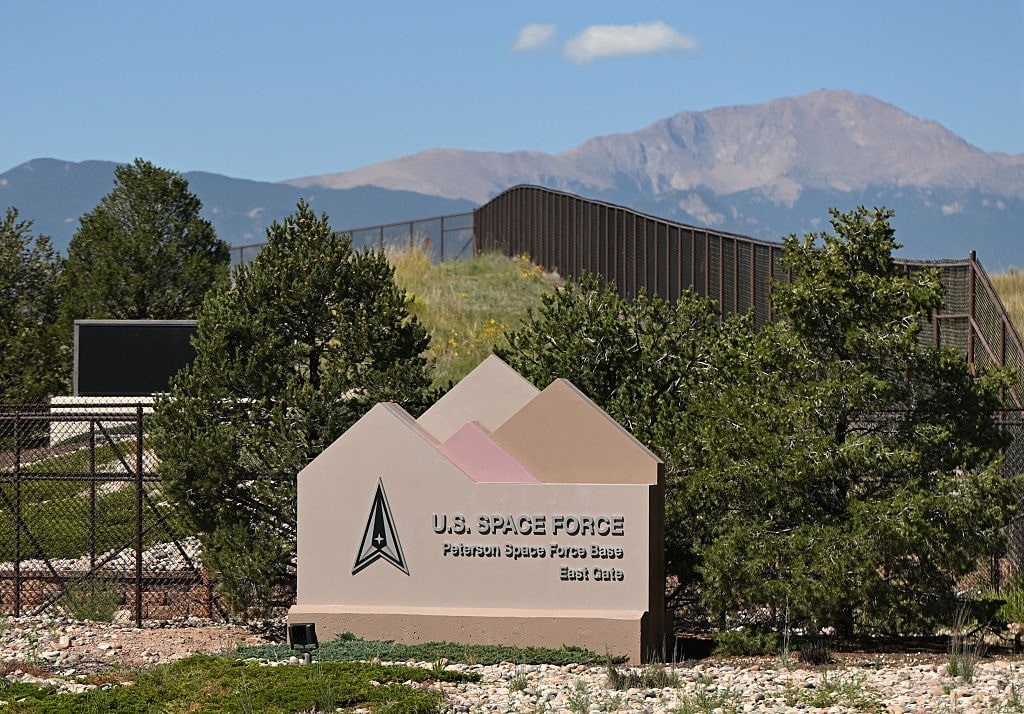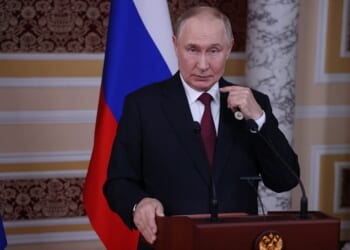
America may be lagging behind in its efforts to exploit space for critical national security needs.
A new Mitchell Institute report on US space operations challenges the US Space Force to do more. The report argues that being able to repair and refuel satellites on-orbit has been a mission that, though recognized as necessary, has not been a priority. Performing such missions exercises what the Institute refers to as Dynamic Space Operations (DSO) and is a capability that the US must have to keep pace with China.
Space Is Emerging As a Warfighting Domain
As President Donald Trump’s “Golden Dome for America” missile defense program takes shape, space operations will be crucial to its success. DSO envisions the US Space Force on-orbit assets maneuvering dynamically to ensure that key satellite arrays are refueled and working correctly. Should a US satellite become disabled following an enemy cyberattack, jamming, or being hit with an anti-satellite missile, reconstituting these forces quickly is a unique and valuable capability. Being able to maneuver sensor satellites and space-borne interceptor satellites is an essential capability. “Interceptors deployed in space have been billed as a key element of the Trump administration’s Golden Dome missile defense initiative, but present considerable technical hurdles,” TWZ observed.
The importance of achieving these on-orbit capabilities cannot be overstressed. China has been a leader in the orbital refueling capability. Air and Space Forces Magazine observed that, “China may be ahead here, having invested in satellite refueling. It conducted a refueling operation this summer in geosynchronous orbit, moving fuel from one satellite to another.” During a Mitchell Institute for Aerospace Studies conference presentation on November 6, covering the study “A Broader Look at Dynamic Space Operations: Imposing Multi-Dimensional Dilemmas on Adversaries,” the study’s author, senior resident fellow for space studies Charles Galbreath, outlined some sobering facts. When it comes to threats to US interests in space, the People’s Republic of China (PRC) has not been sitting on its hands.
The introduction to the Mitchell Institute report lays out the issue, explaining,
“China’s stated goal of supplanting the United States as the world’s preeminent space power cannot go unchecked. The US economy and warfighting capabilities fundamentally rely on technologies, services, and effects from orbit. Moreover, whoever controls space will establish new norms and standards for decades to come in this boundless domain. The US recognition that space is now a warfighting domain is not, in itself, enough.”
According to Galbreath, the PRC is expanding its “global network of sensors” that can track US geosynchronous satellites used for space-based situational awareness by the US Space Force (USSF). These satellites are most frequently maneuvered by the USSF. The PRC can “find, fix, track, and target any US or Allied satellite.” Additionally, China is continuously “increasing [its] launch rate and number of satellites on-orbit.” This has created a situation where China has “Numerous intelligence, surveillance, and reconnaissance satellites creating a kill-web to extend their anti-access and area denial ability” in space. The PRC has demonstrated a capability of grabbing and moving a satellite to a different orbital position, as well as what Galbreath calls “multi-satellite ‘dogfighting.’” This year, China accomplished an on-orbit refueling, extending the mission profile of an existing satellite.
There Is a Logjam
Galbreath recognizes the need for in-space servicing, assembly, and manufacturing to enable the actual building, upgrading, and repairing of satellites while on-orbit. The building of satellites would not be constrained by weight and size limitations experienced with ground-launched satellites. So, why hasn’t the US been more proactive in getting out in front in DSO? Combining NASA’s capabilities with those of commercial space launch providers has the potential to enable the US to outpace China in the frequency of putting satellites into orbit by a considerable margin. One reason, as Galbreath explains, is the “chicken and egg” dilemma. The aerospace and defense industry is waiting for the government to identify the requirement for moving forward with DSO and make it a program of record with funding. While the government is “waiting for commercial logistics infrastructure to mature.”
What it will take for the log jam to be broken is “a bold decision” by government or industry. The industry is waiting for a demand signal before going out on risk to develop an on-orbit logistics infrastructure that “does not currently exist.” On the other hand, the Pentagon is in the best position to move the effort forward, and one would think that the threat, as Galbreath has described it, would be motivating. The USSF must recognize DSO as a critical requirement and establish a program of record and a corresponding program office with allocated funding. However, funding relies on Congress to do its job, and to date, Congress has failed miserably. Without a reliable funding stream, planning and programming for space operations is next to impossible. Such impediments, though, do not reduce the requirement for a space logistics system to make DSO a reality. However, they do make the looming Chinese space threat more ominous.
The views expressed are those of the author and not of any other affiliate.
Liberty Nation does not endorse candidates, campaigns, or legislation, and this presentation is no endorsement.

















